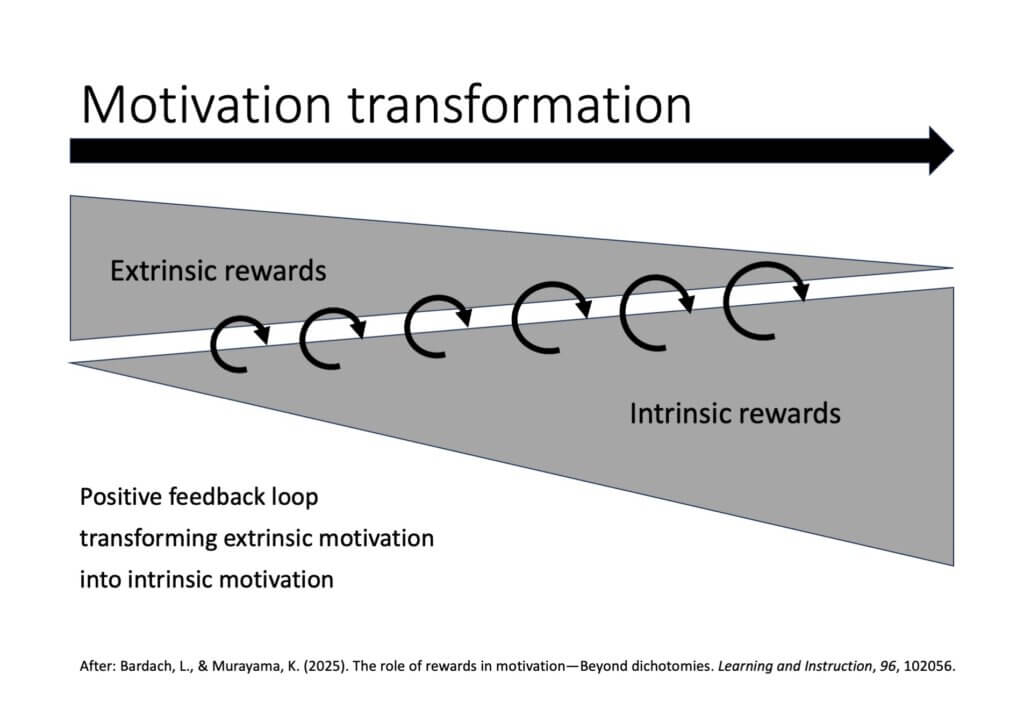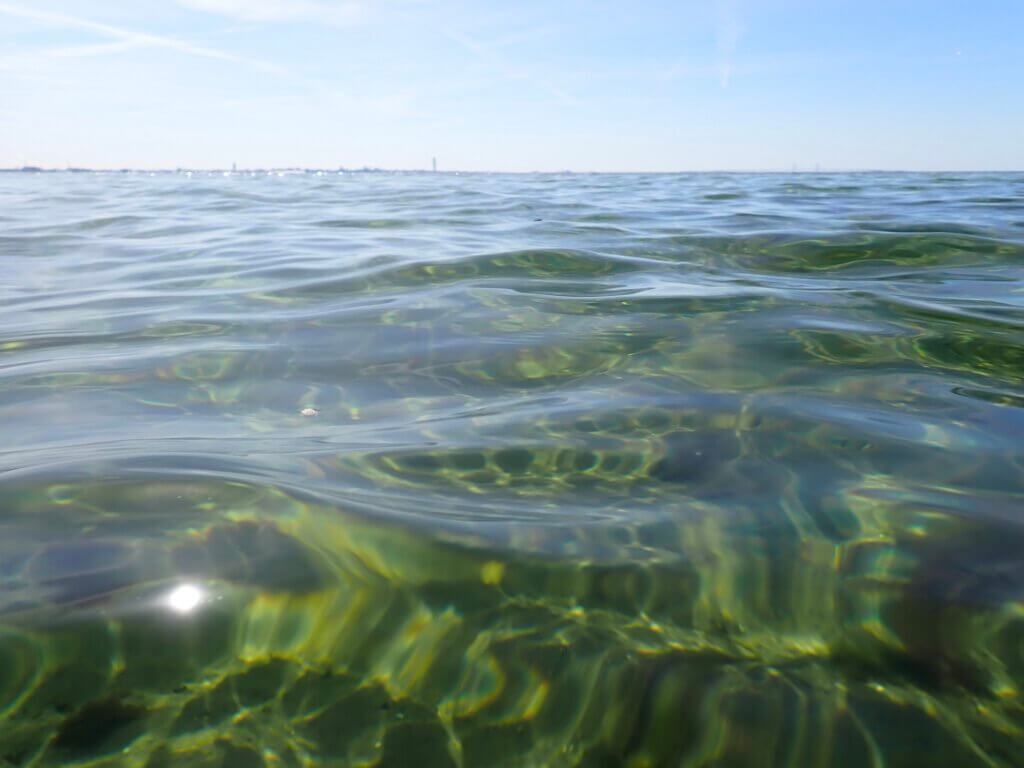
“Should teachers worry that giving students gold stars or stickers for completing writing assignments decreases their motivation?” Currently reading Bardach & Murayama (2025) on “The role of rewards in motivation”
Bardach & Murayama (2025) discuss the conflicting results of studies on motivation, where rewards are found to both increase and decrease motivation, depending on the study. They point out that a binary view is not helpful, but describe “motivation transformation”, a process that can transfer extrinsic motivation into intrinsic. In that view, extrinsically motivated learning can start a feedback loop, where — by learning — the learner realises that there are intrinsic rewards in learning itself. So especially initially unmotivated learners can get a taste for learning through an externally motivated approach. The underlying assumption is simple: “learning serves as an intrinsic reward, but if learners do not start learning, there is no way for them to experience intrinsic rewards“.
However, according to Bardach & Murayama (2025), once this feedback loop has started and intrinsic motivation is experienced, continuing providing extrinsic rewards can actually harm the intrinsic motivation (I find this article really interesting — 10 years ago, we speculated that if we are “too motivating”, we might end up in a feedback loop where students expect more and more extrinsic motivation from us. So we might have been on to something there)! Also, if people are offered a reward for a task, they expect it to be less interesting and might actually be surprised when it does turn out interesting after all. And only relying on intrinsic motivation is also difficult as studies have shown that performance of people with high intrinsic motivation drops considerably when given a task that isn’t perceived as interesting.

So how do we get into — and feed — that positive feedback loop? So far, the framework presented by Bardach & Murayama (2025) is only theoretical and lacking empirical research to support it. Nevertheless, there seem to be indications that intuitively seem valid that could support getting a positive feedback loop started. For example making sure that the initial tasks reveal more knowledge gaps: If the first task is a self-contained trivia question, then finding the answer to that might be intrinsically rewarding, but there is no obvious next step to take to stay in the loop. Or by to helping students to develop — initially externally rewarded — interest-enhancing strategies, in the hope that they will successfully develop an interest and thus intrinsic motivation. And one observation Kjersti made when we first developed the cruise activity bingos was that students started participating because it was cold and we had buffs as prices and they wanted them, but then kept going after they had gotten one (for completing their first bingo), because they had realised that it was actually fun to engage with them. So they might be on to something?
I think this is a really interesting, and it definitely makes me intrinsically motivated to play around with this and close my own knowledge gap :-)
And now on to some wave watching from today’s dip: Beautiful (but cold) spring weather. Does the tree look a tiny little bit green already?

I just loooooove these kinds of pictures, where I zoom to Öresundsbridge on the horizon but then get these beautiful waves in focus! The colours are not from an oil spill but rather it is where we see the sunlit, sandy bottom blink through in areas where we look at the water surface at a steep angle and can therefore look inside, rather than just seeing the reflection of the sky!

And some more beautiful waves… Cold water is really the best! (And note the Turning Torso in Malmö in the background, and Öresundbridge…

Bardach, L., & Murayama, K. (2025). The role of rewards in motivation—Beyond dichotomies. Learning and Instruction, 96, 102056.